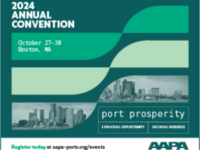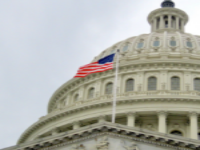PORTS + POLITICS: Maritime Commerce and Growth Rely on a Strong System
Maritime commerce relies not on one single port or terminal, but a system of harbors, ports and waterways that help move goods from suppliers to manufacturers and consumers. Maintaining and improving that system requires sustained federal investment.
* By U.S. Congressman Alan Lowenthal, CA-47 *
In Congress, I’m honored to serve as the Democratic co-chair of the Congressional Ports Caucus.
While I have the privilege to represent the Port of Long Beach as part of California’s 47th district, through this leadership position I represent and advocate for the needs of ports throughout the country.
After all, maritime commerce relies not on one single port or terminal, but a system of harbors, ports and waterways that help move goods from suppliers to manufacturers and consumers. Maintaining and improving that system requires sustained federal investment.
I’m proud of some of the progress Congress has made to support our nation’s ports – from dedicated funds for port infrastructure in the BUILD (formerly TIGER) program, to continued progress toward full use of the Harbor Maintenance Tax revenue. Bipartisan support from many Ports Caucus members has been key to secure these important investments.
We’ve also delivered bipartisan support for continued investment in the Port Security Grant Program, which provides key resources for our ports to manage varied security threats. Our caucus learned about some of these threats firsthand from Coast Guard and DHS officials after the June 2017 cyberattack that halted activity at terminals across the country. I’m proud that Congress passed my California colleague Norma Torres’ bill to strengthen information-sharing on these cyberattacks at ports, and I believe that we can do more to deliver the resources ports need to combat these complex, growing threats.
I’m heading into 2019 determined to make more progress on infrastructure investment than the past two years. This Congress never passed substantial infrastructure legislation, and the tax reform push came and went without a serious discussion on raising needed revenue for infrastructure investment. We’ve made important progress to identify key projects in the National Highway Freight Network and individual State Freight Plans across the country. However, without dedicated, sustainable funding, these plans will only be good intentions.





